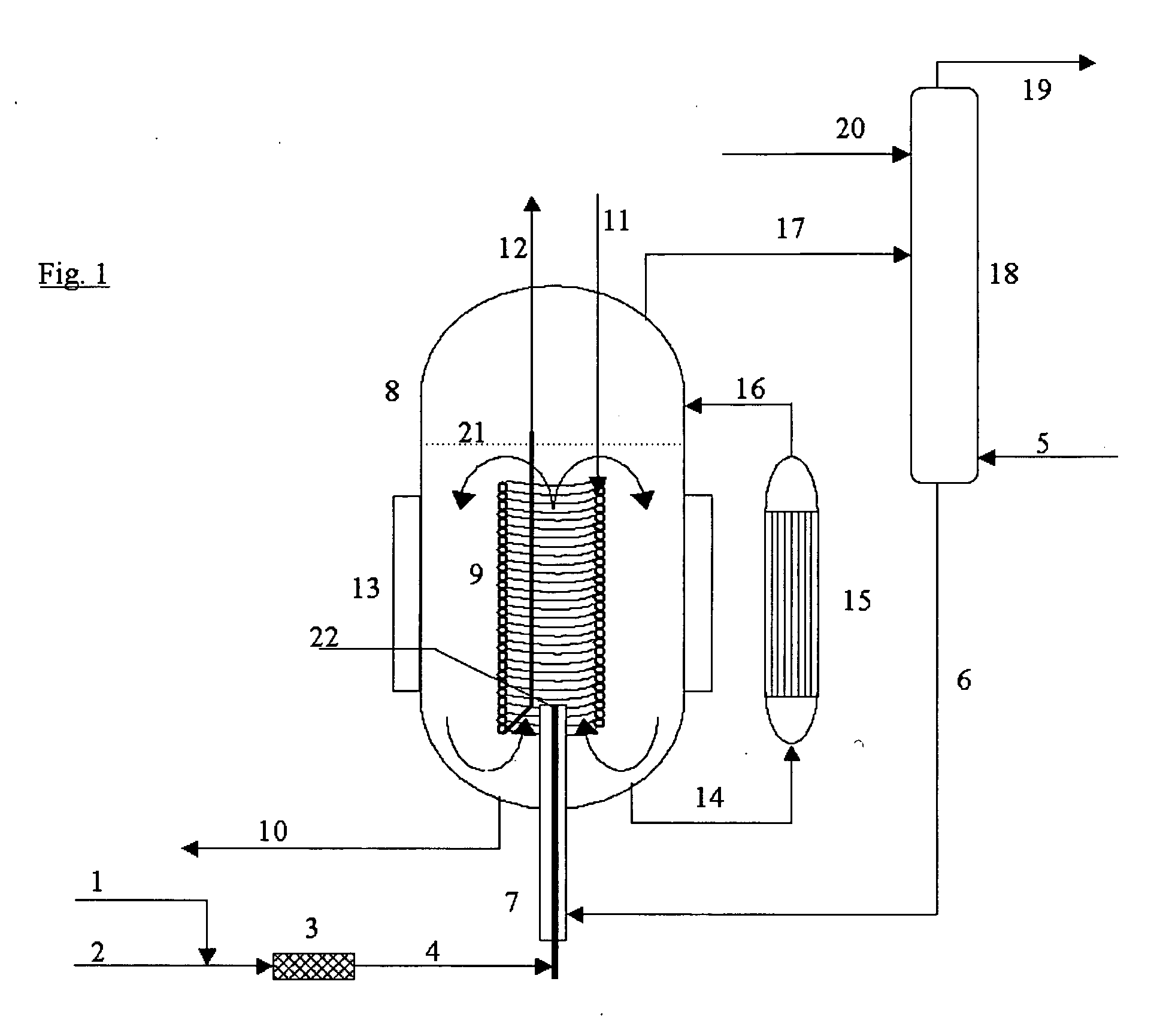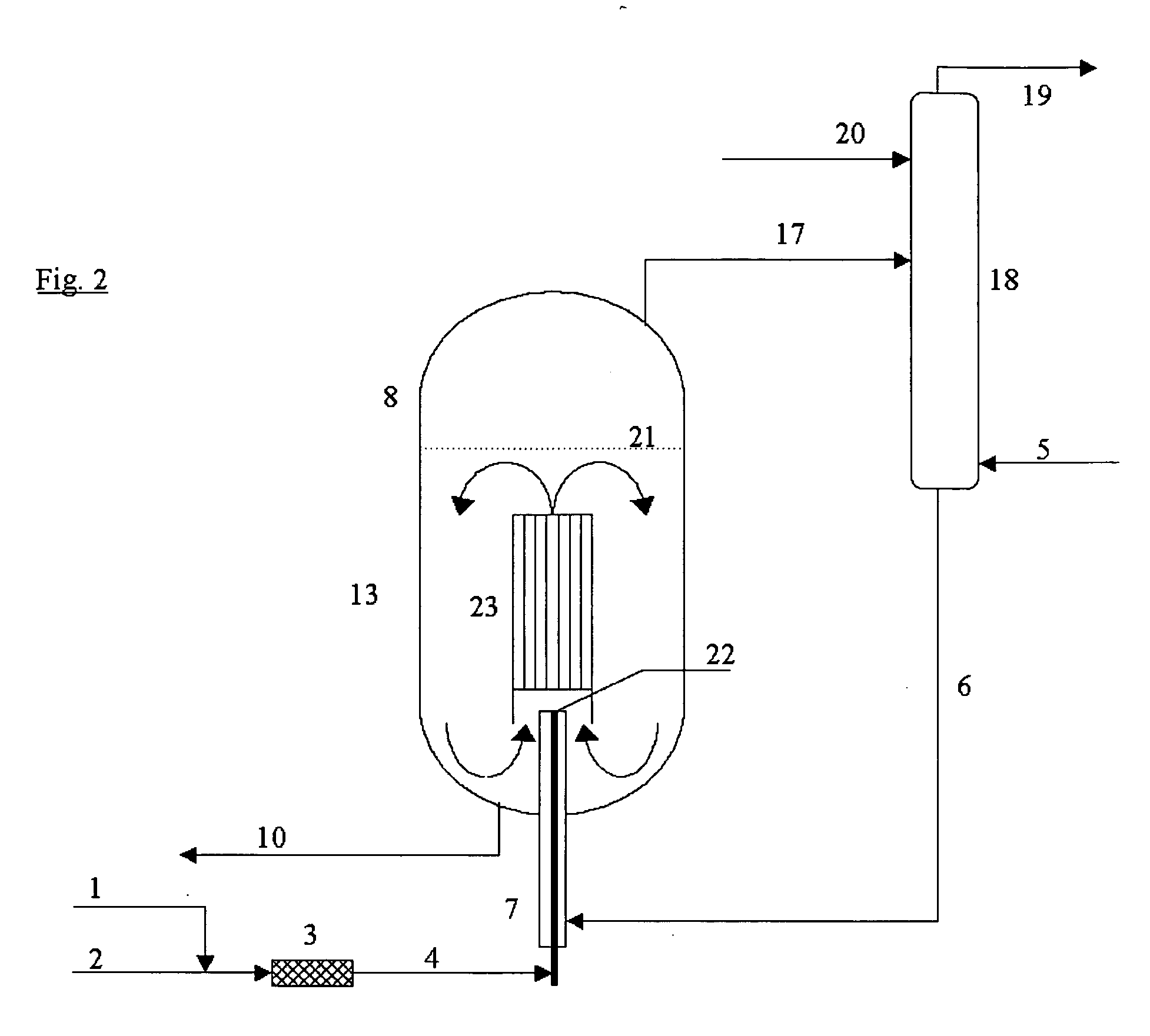Process for the continuous preparation of organic monoisocyanates and polyisocyanates
a polyisocyanate and monoisocyanate technology, applied in the preparation of isocyanic acid derivatives, chemical/physical/physicochemical processes, organic chemistry, etc., can solve the problems of two-stage processes, significant amount of solids formed, and many disadvantages of conventional processes, so as to reduce the overall stoichiometric excess of phosgene, reduce the urea formation, and improve the overall stoichiometric efficiency
- Summary
- Abstract
- Description
- Claims
- Application Information
AI Technical Summary
Benefits of technology
Problems solved by technology
Method used
Image
Examples
Embodiment Construction
[0027] The process according to the invention is quite generally applicable to the manufacture of organic isocyanates which can be obtained by reacting amines with phosgene. For example, monoisocyanates, diisocyanates and / or polyisocyanates can be manufactured from the corresponding organic monoamines, diamines and polyamines.
[0028] Suitable organic monoamino compounds have the formula R—NH2, where R is an unsubstituted or substituted monofunctional aliphatic, cycloaliphatic or, preferably, aromatic radical having 1 to 20, preferably 6 to 12, carbon atoms. Examples are aliphatic monoamines, e.g., methylamine, ethylamine, butylamine, octylamine and stearylamine, cycloaliphatic monoamines, e.g., cyclohexylamine, and especially aromatic monoamines, e.g., aniline, toluidines, naphthylamines, chloroanilines and anisidines.
[0029] Preferably, however, the diisocyanates and polyisocyanates, which are of importance for the industrial manufacture of polyurethanes, are manufactured from the ...
PUM
| Property | Measurement | Unit |
|---|---|---|
| velocities | aaaaa | aaaaa |
| velocities | aaaaa | aaaaa |
| temperature | aaaaa | aaaaa |
Abstract
Description
Claims
Application Information
 Login to View More
Login to View More - R&D
- Intellectual Property
- Life Sciences
- Materials
- Tech Scout
- Unparalleled Data Quality
- Higher Quality Content
- 60% Fewer Hallucinations
Browse by: Latest US Patents, China's latest patents, Technical Efficacy Thesaurus, Application Domain, Technology Topic, Popular Technical Reports.
© 2025 PatSnap. All rights reserved.Legal|Privacy policy|Modern Slavery Act Transparency Statement|Sitemap|About US| Contact US: help@patsnap.com


